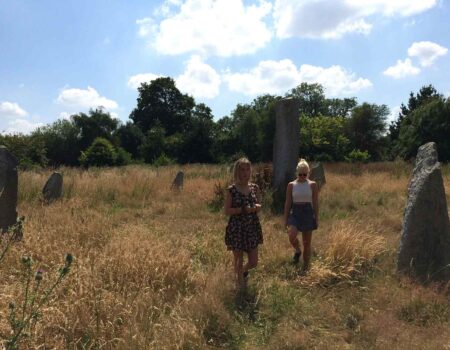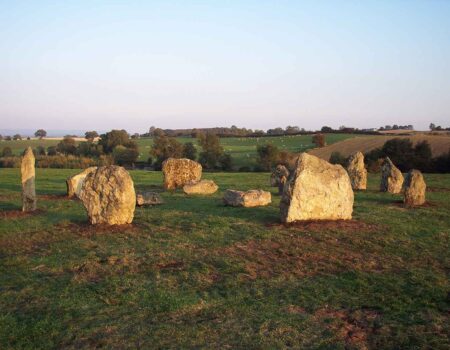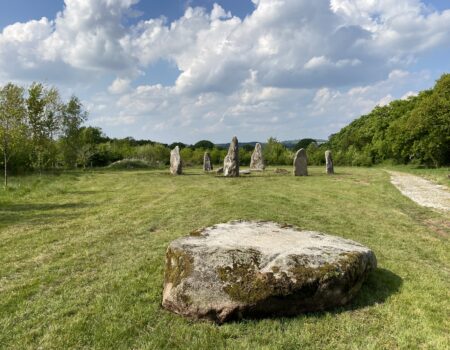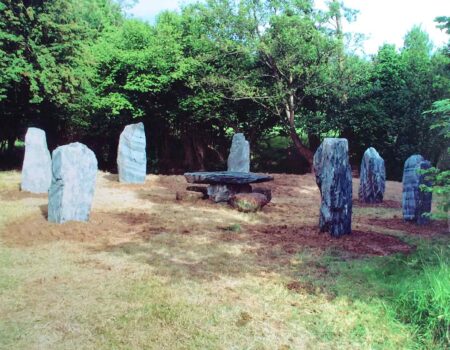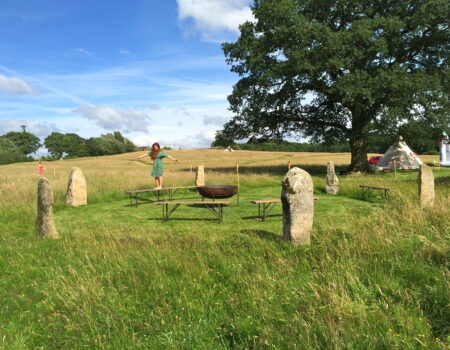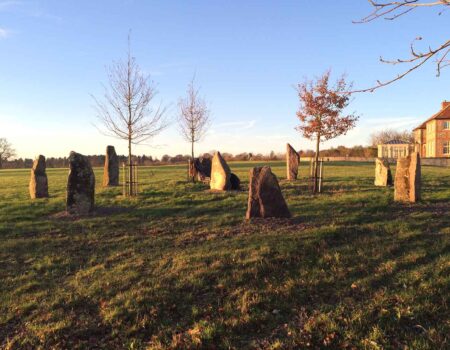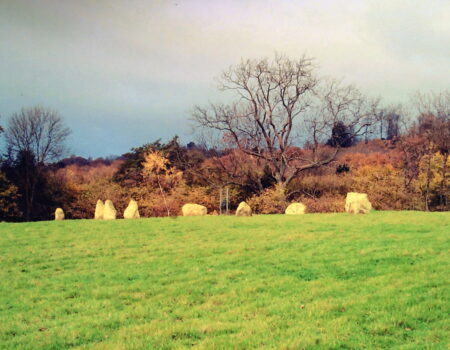Garden & landscape stones
Stone Circles
A stone circle can transform the right location into a breathtaking site, peaceful and mysterious. Our stone circles are mainly based on ancient designs. We also build new unusual designs.
Read more
Small woodland stone circle in West Sussex, a mixture of Preseli Bluestone and Sarsen stone, the two Stonehenge stones. This circle is – unusually – oval

Cornish granite stone circle in Kilmarnock, North West Scotland. The owner was a Londoner who relocated.
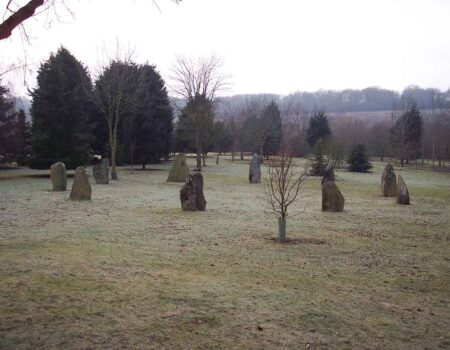
Large Preseli Bluestone stone circle, Oxfordshire, view from house. Preseli Bluestone is one of the two main stones used at Stonehenge

Circle of large Cornish granite and Preseli Bluestones commissioned by Ringo Starr. At the centre are a seat stone and a dolmen – a Neolithic chamber of upright stones with a single stone lying across, often used for burials.

Stone circle brings ancient mystery to a conventional garden. Cornish granite encircled by Preseli Bluestones and Sarsen stones.
Continued...
There is no fixed number of stones: many existing prehistoric circles, Stonehenge included, use 12 or more. But the size of modern circles depends on the site. Stones can be any of our rare and unusual stone types. Stones used can be large or small as suits their location.
Stone circle are sometimes placed in alignment with existing ley lines. Stones can also be aligned with special dates like summer and winter solstices.
Please contact us or call us on +44 (0)7818 403247 to find out more about stone circles.

